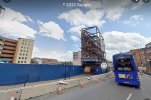I only joined BHF today - should have joined a lot earlier! I'm late to this strand, but I am a descendant of the Beach family whose member, Thomas Beach, a great something Uncle of mine, was an early owner of the Avery Scales making business. I can see the topic has moved on more to archeology really, but I'll add my bit anyway in case there is interest. Thomas was my great something grandfather's brother, the family originated in Tanworth, farmers, later farmed in Shirley (Blackford House, demolished 1936). By Thomas's generation he and my grandfather Richard Beach had become involved in the metal trades, brass founders etc. Both men were apprenticed and both ended up quite wealthy from their endeavours. Because Richard died before younger brother Thomas, it was Thomas who inherited Blackford House but farming wasn't his thing so it was youngest brother Joseph who farmed. Thomas Beach bought the scale making company from William Bridgens Barton in about 1779 (from memory) and as everyone in this strand knows the business was at 11 Digbeth. Thomas did very well out of the business, well enough to be able to pass it onto an extended family member Joseph Balden in about 1794 (Joseph had married an Avery and the Averys were part of the Beach family through marriage). Joseph died in 1813, his son was only 19, and mentally unwell as it transpired, so luckily the business was passed onto William Avery (who'd married a Beach), and William Avery passed it onto his two sons William Henry and Thomas who, according to a Newspaper article, "aggressively expanded the business in the mid 1800s." From what I've read, the sons took over in 1854 and soon expanded, the Digbeth premises not being large enough for their empire building. I would think that it is around this time that they moved across the street from no 11 Digbeth, if not before. Another history article in the press stated that the Digbeth premises were retained along with the new locations (of Soho and elsewhere). Here is a very poor image from a press article in 1930, showing a replica of the original no. 11 building. It was exhibited at a trade fair as part of the celebration of Avery Scales being 200 years in the business. Although details are sparse on the image, you can see how small the original scale making building was from the two men standing on its steps. As an aside, Thomas Beach continued having an interest in the business with Balden I believe, they were close enough that when Balden Junior became mentally unwell, Thomas stepped in to help Balden Senior's widow. After passing on the business, Thomas Beach became more like a property investor until his death in 1825.




